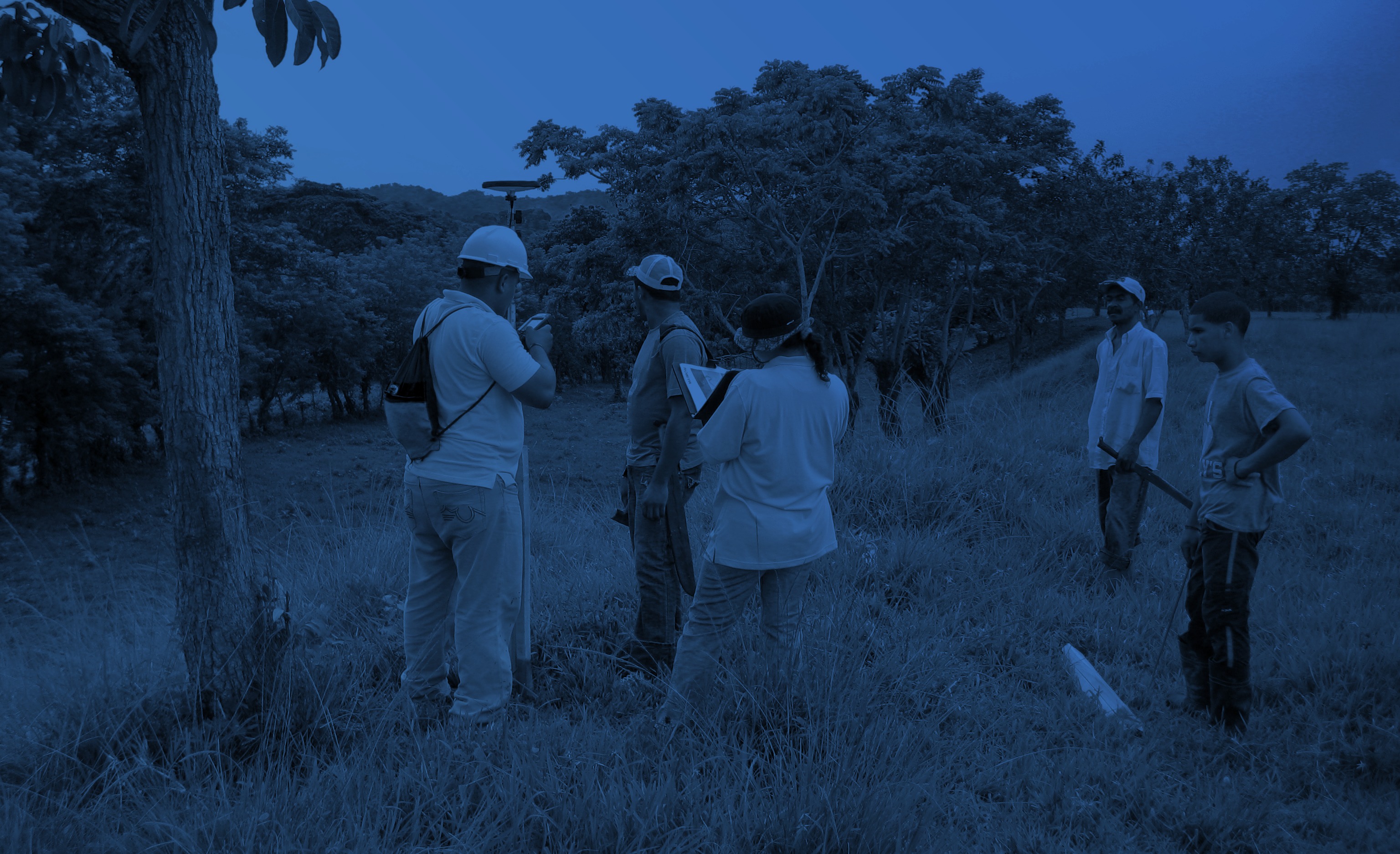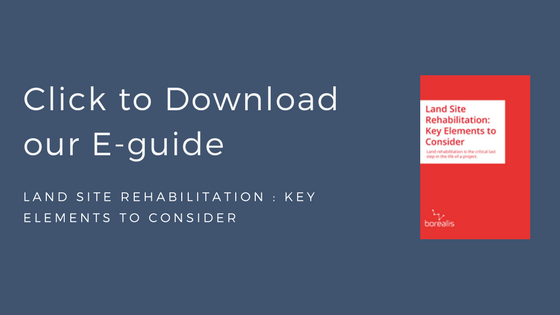Involuntary resettlement is typically avoided if possible, but land acquisition is sometimes necessary for large infrastructure projects. Expropriation – that is, a government’s power to take private property for public use – can sometimes occur even when communities or businesses do not reach a voluntary agreement with the project manager.
Who are the key stakeholders of land acquisition and resettlement projects?
It goes without saying, all the activities linked to resettlement planning and implementation generate tremendous amounts of data: from the numerous project stakeholders to activities, all of which will vary according to the stage of the resettlement process. Using an information management system (IMS) has thus become a must-have rather than a nice-to-have to manage all this data from as early on as possible in project planning, and throughout the project lifecycle. Across the wide-variety of systems that have been used to carry out land acquisition and resettlement activities (from Excel spreadsheets to fully custom systems and even CRMs), the one we’ve seen rise as the go-to is stakeholder management (or social performance) software.
In the best case, good stakeholder engagement software that will ease the land acquisition, resettlement and livelihood restoration processes should match the following descriptions:
- Meets specific project needs with configuration options that easily adapt.
- Is easy to use and doesn’t require constant external support.
- Can store and analyze social baseline data – including geo-referencing of information.
- Acts as a tool to establish compensation and assist in determining entitlements for individuals and households.
- Aligns with and helps demonstrate compliance with IFC’s Performance Standard 5.
- Generates and stores documents linked to compensation and/or relocation packages, as well as information about delivered payments and in-kind assistance.
- Tracks the progress of relocation and livelihood restoration of affected people.
- Assists management of the project’s grievance mechanism.
- Acts as a central repository of stakeholder engagement records, including individuals, households, organizations, and more.
- Generates reports and offers analysis options to monitor progress on resettlement implementation.
- Caters to other reporting needs of the project and is part of the broader corporate social responsibility activities, including: social investments programs, local procurement, environmental monitoring, etc.
How can the social performance application help throughout the various stages of resettlement?
As mentioned earlier, land acquisition and resettlement activities generate a lot of data throughout the project lifecycle. So, how should a good information management system assist teams for each specific stage?
Census, surveys and baseline data collection
To be able to report on activities and in order to offer legitimate compensation based on facts, this first stage is very important. Detailed census, socio-economic surveys and inventory of assets of Project Affected People (PAPs) must be carried out. For projects where both the environmental and social impact will be measured (which is most of them), environmental and social impact assessment (ESIA) takes place at the same time. The project’s team will have to share information with stakeholders and hold public consultations, which will explain the resettlement process to communities, authorities and others. These consultations with host communities and individuals are key to obtain information about land titles, claims and use, in addition to providing important information to displaced stakeholders on land acquisition and/or restrictions on land use.
These socio-economic surveys, census and asset inventories generate large amount of data, but most importantly they provide an overview of the extent of the project’s impact on communities, households, individuals, assets, livelihood, etc. If the surveys aren’t carried out at the very beginning of the project, collected data will not be accurate and consequently this will impact project planning and reporting on activities. The accuracy of baseline data also directly affects a project’s Resettlement Policy Framework (RPF).
Aerial and satellite imagery and asset surveys are strongly recommended for projects in time for the cut-off date, so that communities can acknowledge records of structures and crops that are eligible either for compensation or other resettlement benefits. It is very important stakeholders have access to these images and records, for instance, in project predetermined areas where communities know they can find project-specific information. The team should provide detailed maps of the project’s projected footprint to assist in the development of resettlement site options. The maps should include: project infrastructure, environmental buffers, features of the area (like road infrastructure, water bodies, crops, forests, etc.), and community infrastructures, from schools to churches, and individual houses including associated infrastructures like farms. Individuals and households that will be physically or economically displaced by the project receive general information about the resettlement from survey teams.
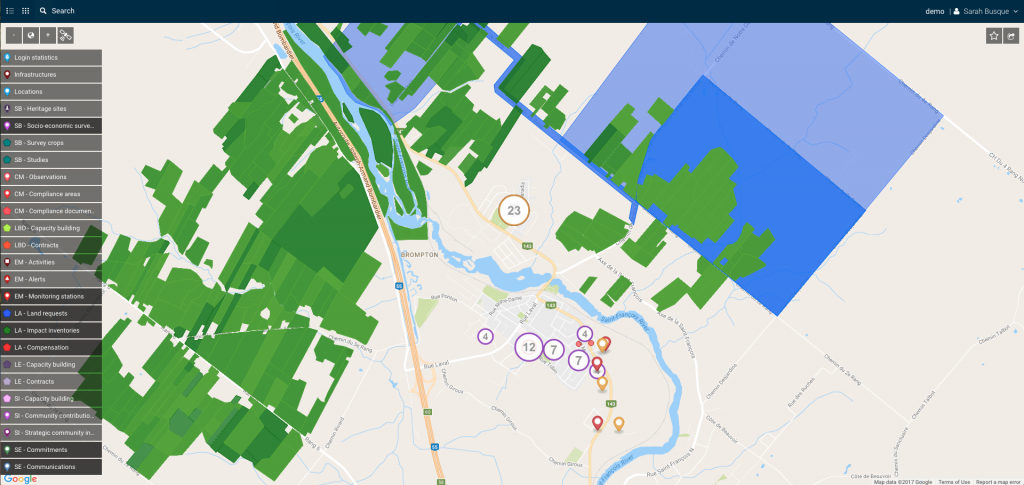
The stakeholder engagement tool’s role at this stage is to centralize all the highly detailed socio-economic, demographic, and land use information collected by survey teams, including related communications. These can vary from queries about relocation, communication campaigns, on the ground interactions, public consultations, etc. The system will help track all the assets linked to an individual, as well as the individual’s various relationships, including but not limited to: household members, spouse, children, colleagues, siblings, etc. It should also allow users to link engagements to stakeholders, like complaints and grievances.
Resettlement planning consultations
The resettlement plans must document the consultation and participation process, as well as the adequacy and extent of information disclosure and consultation activities conducted before land acquisition is considered by external audits. Resettlement Action Plans (RAP) will describe how affected people will be involved in consultation activities throughout the planning, implementation, and monitoring of resettlement. Consultation activities must take into account vulnerable peoples like women, elderly and disabled, and make sure that their concerns are captures and considered at all stages of resettlement.
Once again, the social performance software will ensure the team gathers each communication with project stakeholders. Furthermore, it should assist with the identification of vulnerable peoples.
Negotiation of agreements
Compensation agreements for individuals and households include provisions for the payment of compensation and allowances, as well as livelihood restoration measures. These follow a precise timeline that is outlined in the agreements.
The role of stakeholder engagement software is to record the detail of these agreements, related engagements, and communications. Beyond that, it should allow users to include documents, like photos of assets, land titles and more to the compensation file of stakeholders.
Compensation payments and resettlement assistance
At this stage, resettlement teams must efficiently manage large amounts of data linked to the payment/receipt of compensation payments or relocation assistance. They’ll have to keep accurate and up-to-date records for each individual (or household) regarding the schedule and delivery of support (whether cash or in-kind), as well as compensation payments.
A good stakeholder management system should allow users, using baseline data previously recorded into the system, to directly generate and calculate compensation payments in the system. Furthermore, signed agreements (to give an example) must be recorded in the file of stakeholders. Information about relocation status of affected households should be recorded and easy to find, and so should land availability for project contractors. Things move quickly at this stage and information has to be updated on a daily basis.
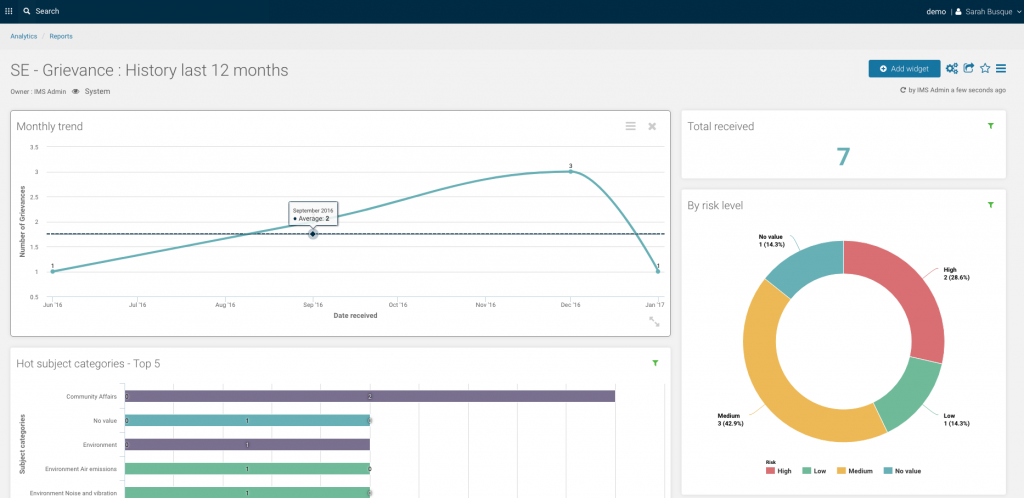
Grievances
Grievances can occur throughout the project lifecycle, therefore they’re not so much of a stage but rather ongoing occurrences. The project should have a clear grievance mechanism into place, one that aligns with IFC’s performance standards, from early on to manage and address all grievances raised by stakeholders. Steps of the mechanism should include: acknowledgement and review of grievance, tracking it in a system with escalation process and a timeframe for resolution – which will vary according to how it has been classified.
The social performance software should support the project’s grievance process, in addition to serve as the main reporting tool on activities, even for external audits. Best practices (like the IFC guidelines) built into the core of the system should support general and project-specific processes.
Relocation and ongoing assistance after resettlement
The project team must record detailed information regarding relocation statuses for households. For instance, whether original structures (like houses) have been dismantled and new ones built and now occupied. Resettlement teams update and monitor this information on a daily basis. Same as with relocation data, all information relating to ongoing assistance must be monitored and updated on a daily basis.
Again, the system should support the team and record all this information. Evidence documents should be attached to records.
Livelihood restoration
Once households have been resettled in their new houses, the next challenge lies in re-establishing and sustaining economic activities that will allow them to maintain or improve their previous standard of living. This is achieved through a Livelihood Restoration Framework (LRF) and/or detailed plans for each affected household. The project team will provision different types of packages, like agricultural enhancement or income generation packages. These plans include activities like re-establishment of gardens or farms, introduction of farming methods or technologies to increase productivity, advice on marketing agricultural products, capacity-building and training for job or development of new businesses, etc.
Livelihood restoration is an ongoing process that usually takes years. It involves multiple communications with stakeholders over a significant period of time. Consultations should be held with individuals in order to determine their interest in, for instance, training for employment opportunities or assistance in setting up a small business. The team will then follow-up on progress once various livelihood restoration measures have been implemented. Other metrics should also be taken into account during livelihood restoration, like household dynamics and issues.
The stakeholder engagement system used should be able to help the team quickly identify any changes in trends and all data related to livelihood restoration.
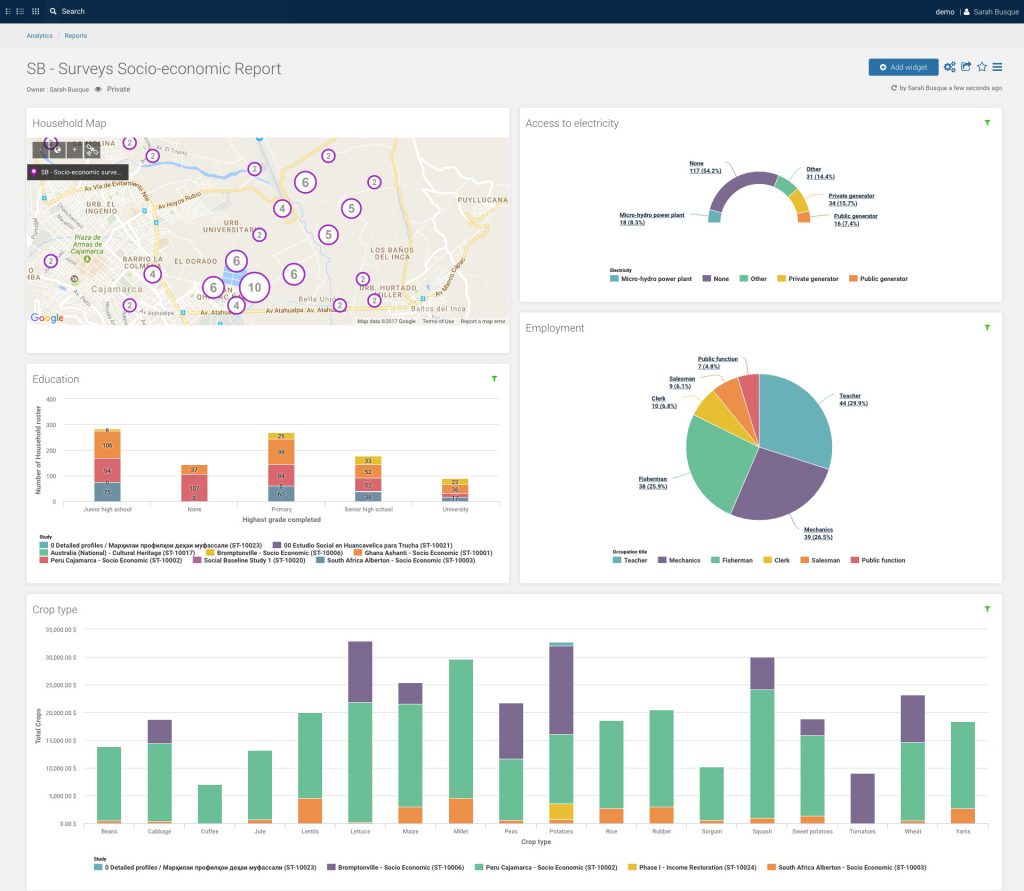
Monitoring and evaluation
All the data that was collected at the beginning of the resettlement program (baseline, surveys, census) and throughout the various stages of implementation is not static and will come in handy for the monitoring and evaluation phase. A series of indicators should have been determined early on in order to measure operations’ impacts, changes, and performance of the project versus expected results. The list of indicators can include:
- Delivery of compensation
- Change in household assets/income
- Agricultural production
- Stability of social networks
- Affected people’s health
- Resolution of grievances
- Level of satisfaction of affected people
The stakeholder engagement system should help track these indicators and assist the team’s field operations on a daily basis. It also centralizes the information to ensure consistent monitoring and reporting, and consequently offers the opportunity to improve efficiency.
At the end of the day, carrying out land acquisition and resettlement activities is a very long, complex and ever evolving process. Every team, every community, every project and every stakeholder is different. That’s why it’s important to choose a solution that will evolve at the same time the project does and that adapts to your needs. It’s also important to choose software that has been built on well-established industry best practices such as the IFC’s numerous performance standards and guidelines.



